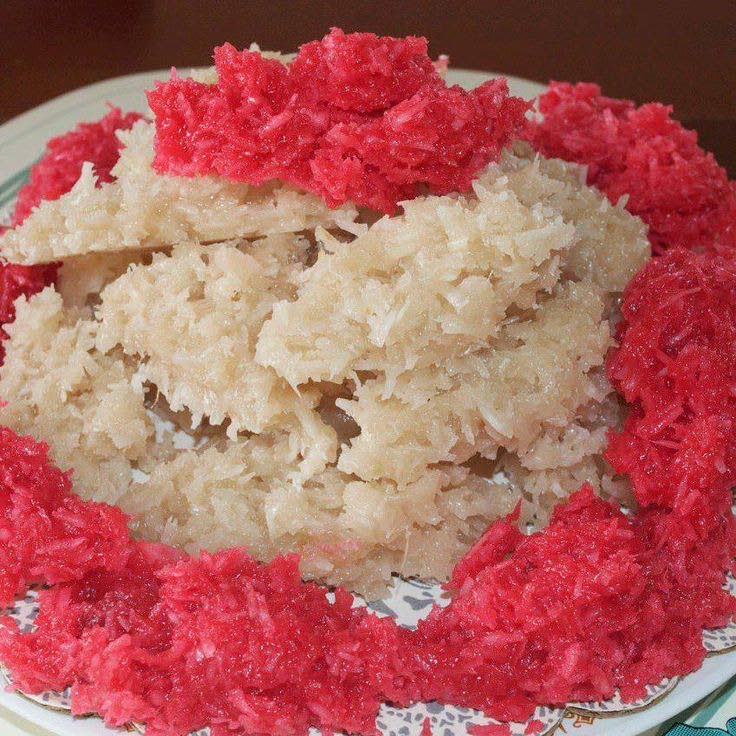Emancipation sweetness

The years 1777-1787 in TT saw the arrival of the French planters, who brought with them their slaves, amongst whom were a number of excellent cooks. The food at that time was becoming more plentiful and exciting.
Salted fish and meats were imported mainly for their slaves, who dined on a mixture of vegetables and provisions, cooked with coconut and occasionally flavoured with salted meats. They called this sancocho, which we still enjoy today as sancoche also called provision soup. This salted meat addition is still evident today in our cuisine.
As settler immigration increased, each group brought their own slaves, who in turn brought varied customs in the kitchen. Remember they did not eat the same meals their masters did, so they created their own dishes from leftovers. While the masters feasted on wild meats the salves used the dasheen bush to make callaloo and cassava foo-foo. They also made paime instead of pastelles with the cornmeal and banana leaves.
The slaves who worked on the sugar plantations sometimes received part of their wages in sugar and molasses. They used these products and made them into sweetmeats, some have become quite rare, like halay – a sweet much like bubble gum and lavanee – a hard toffee like sweet in various colours. The sweets that have remained with us today were created in the African culinary custom are toolum-heavy with molasses, coconut and spices and the beloved sugar cake, both chip chip and grated.
Halay
1 cup water
2 cups granulated sugar
Pinch of cream of tartar
Food colouring of your choice
Icing sugar
Heat water in a heavy sauce pan, add sugar and cook stirring until sugar is dissolved.
Add cream of tartar and cook until a candy thermometer registers 258F.
Stir in food colouring to your desired colour intensity.
Pour mixture onto a large porcelain tile or a marble slab, cool for 5 minutes.
Using a large knife blade bring the sizes together on all sides, divide into two.
Knead mixture using icing sugar on your hands to prevent sticking.
Poll the candy making a thick ribbon, then cut into 2 inch lengths, leave overnight, then wrap in plastic paper. It will be soft and chewy.
Toolum
A heady mixture of good strong molasses and coconut spiced with orange peel, a chewy and very satisfying candy.
2 cups brown sugar
½ cup molasses
3 cups freshly grated coconut
1 tbs grated ginger
1 6 inch piece of dried orange peel, broken into small pieces
In a heavy sauce pan heat sugar until it liquefies and turns an amber colour.
Add molasses and coconut and stir well.
Add orange peel and ginger and continue to cook on a low heat for a few minutes more until the mixture pulls away from the sides and bottom of the pan.
Remove from heat and cool slightly, then drop by tablespoonful on top a greased baking sheet.
Roll into balls.
Cool and place in an airtight jar.
The longer you leave the toolum uncovered the harder it becomes.
White sugar cake
4 cups granulated sugar
1 cup water
4 cups grated coconut (peel coconut before grating)
½ tsp cream of tartar
2 cloves
½ tsp almond extract
Boil sugar with water until syrup spins a thread when lifted with a fork or when bubbles the size of large pearls appear on the surface.
Add grated coconut and cloves to mixture stir constantly.
Boil until mixture leaves the bottom and sides of the pan easily
Your mixture should still contain some syrup.
Remove from heat and add almond extract, beat with a spoon until mixture becomes thick.
Drop by spoonful’s onto a greased cookie tray and let harden.
Or
Place mixture into a 9 inch greased baking tray.
When cool cut into squares.
For coloured sugar cake, use granulated sugar and add colouring to colour as you desire.
For chip-chip sugar cake, cut coconut into small chips.
For brown sugar cake use brown sugar and grate the coconut with the brown skin and add a piece of cinnamon stick. And omit the almond extract.



Comments
"Emancipation sweetness"